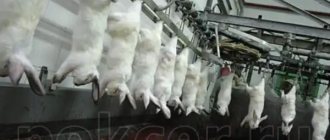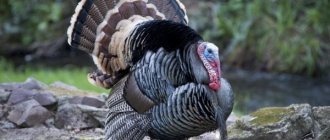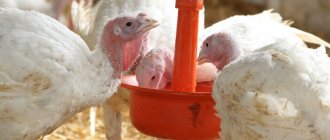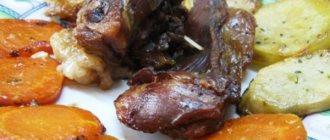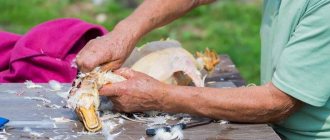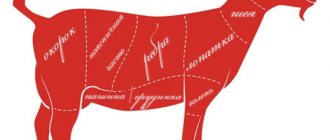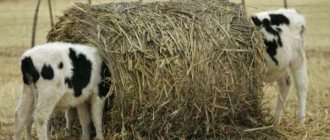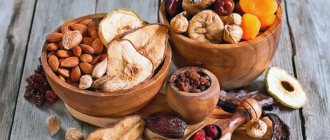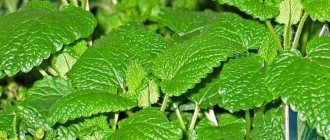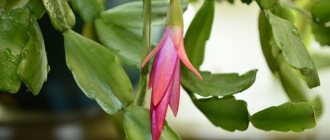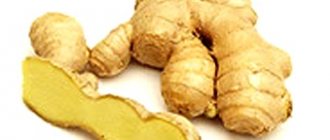Slaughtering poultry is not as easy as it might seem at first glance. To get good, high-quality meat and maintain its appearance, you need to follow the rules. You will learn further about when you need to slaughter a turkey (we are talking about age), what are the main features of home slaughter and the step-by-step procedure for cutting the carcass. With a little practice, a novice farmer can cut up bird carcasses in literally no time. The main thing is not to forget that sometimes it is better to look at the manual once again than to make mistakes. Also from the review you will learn which slaughter option is better to use - internal or external.
Preparing a turkey for slaughter at home
Before slaughter, the bird must be carefully prepared. At the time of manipulation, the esophagus and stomach must be free of food, otherwise it will be more difficult to gut the carcass, and the quality of the meat may suffer (two days after killing, the cloaca and goiter become cyanotic). On the eve of the scheduled date, do not feed the bird (at least 14 hours before, preferably 24 hours). Manipulations should be carried out in a dark room, but water should be freely available so that the intestines can freely empty feces.
This article will tell you what to feed turkeys.
You can give the bird a solution of Glauber's salt - it will liquefy the feces and speed up the process of natural bowel movement. It is also recommended to include bran or rye flour in the poultry diet before slaughter.
How long does a bird grow before slaughter?
Bronze North Caucasian turkeys, like other breeds, are ready for slaughter when their body weight is at least 12 kg - this is approximately 8 months. Broilers can be slaughtered even earlier because they are larger. You should not waste time, as the meat will begin to lose its dietary value and become tough. Males are released for slaughter at 2-3 months, since they still lose their value as producers.
You can learn about BIG-6 turkeys here.
The slaughter must be completed before the start of molting - otherwise it will be almost impossible to pluck the bird.
Livestock maintenance
Poultry farmers need to decide what technique to use to fatten turkeys. Chicks from the brooder can be transferred to cages, bedding, or an outdoor aviary. The diet of individuals depends on the maintenance of the livestock. If the young animals are kept in cages, then fattening is carried out with dry food. It begins to be given to chicks from the 5th day of life:
- up to 5 weeks, turkey poults eat mash from the pre-start version of the feed. The initial amount is 10 g. By week 5, the amount of dry mixture is increased to 90 g;
- From 6 to 13 weeks, starter versions of the feed are used. The volume of the mixture grows from 120 to 265 g;
- At 14-17 weeks, preparations are underway for finishing fattening. Teen feed lines are used. A serving is 280-325 g;
- 18-30 weeks is the last stage of fattening the bird. The serving size is 220-280 g. Growth in turkeys gradually slows down and stops by 36 weeks.
More on the topic: How much does a turkey weigh?
If traditional diets are used when raising livestock, then grain mixtures based on corn, wheat, peas and barley are used for fattening. It is recommended to add buckwheat and peeled oats to grain complexes. In addition to grain mixtures, green grass, vegetables, mineral and vitamin supplements, and protein fillers are introduced into the diet.
With combined feeding, some part of the diet is replaced with dry mixtures from the manufacturer. Their volume is 30%. Mineral salts, vitamins and high-calorie fillers are not added to the diet. Everything you need is contained in the finished product:
| № | Helpful information |
| 1 | at 10 days the chicks receive 40 g |
| 2 | at 20 days – 160 g |
| 3 | per month – 320 g |
| 4 | at 2 months – 400 g |
| 5 | Then they look at the bird’s behavior, appetite and activity. Individuals are able to independently regulate their food intake. By the age of 4 months, heavy males can consume up to 600 g of nutritional mixture or from 800 g to 1 kg of the traditional diet |
Turkeys are very sensitive to living conditions. They are whimsical and demanding. They show good growth and high productivity if all sanitary standards and a certain microclimate are observed in the poultry house. The optimal room temperature is 16-18 C, humidity 55%. The poultry house must be constantly ventilated. A lack of oxygen will immediately affect the health of turkeys.
How long to keep a turkey fattening depends on poultry farmers. They decide at what age to bring young animals to slaughter. The optimal period is 7-9 months. Broiler crosses reach their good productivity at 4 months.
More on the topic: What do Canadian turkeys eat?
If you wish, you can raise a bird of maximum weight, but this will require additional funds. In addition, turkeys weighing up to 8-10 kg are in demand among consumers. From the 26th week, growth in birds slows down. By 34 weeks, development stops. Turkeys continue to be kept only for yard decoration.
Types of slaughter
Most farmers who raise turkeys as a business consider beheading with an ax to be the optimal form of slaughter. This method is acceptable, but only if the carcass is immediately processed into a finished product (the conditions for maintaining the purity of the meat in this case are not met, so the raw materials quickly deteriorate). Also, cutting off the head is suitable for slaughtering the largest and largest turkey, which is not so easy to handle. The ideal method of slaughter is closed, when all actions are performed through the mouth. In this case, the carcass does not get dirty with blood, it flows out quickly, and the meat does not spoil for a long time.
The faster you free the carcass of blood, the better and fresher the meat will be.
Internal slaughter
At the back of the turkey's palate are the pontine and jugular veins. The farmer must cut them to ensure normal blood flow. Take sharp scissors, open the bird's mouth and perform the necessary actions. The connection of the veins is located on the left side of the throat, inside. Move the blade back a little, then quickly inject, pointing the end of the blade (it should hit the cerebellum). This link will tell you about the English quail breed.
When you open the veins, hang the turkey upside down by its legs, don’t forget to spread its wings. Plucking of the carcass begins after the blood has drained.
External
Not the cleanest, but very popular method. The jugular vein is opened from the outside of the neck. Look for it 2.5 cm below the ear opening, in the area of the facial and carotid arteries.
Meat storage
It is better not to use meat for food immediately after slaughter and gutting. It needs to go through a fermentation stage; this process is desirable for any meat. Under the influence of natural enzymes, the structure of the protein changes, it becomes more acceptable for consumption and is better absorbed by the body. Meat ripening takes from 12 hours for young birds to 1-2 days for older ones.
If for some reason it is not possible to place fresh meat in the refrigerator or freezer, you can use the cellar. A carcass can stay in a normal cellar for a week without problems.
Meat can be preserved for the same period in the following way:
- Prepare a 40% solution of table salt. It needs to be dissolved in hot water; such an amount cannot be dissolved in cold water.
- The cooled solution is poured into the bird’s throat at the rate of 0.5 cups of solution per 1 kg of weight.
- The throat is tightened with a cord, and the carcass is hung by the legs in a cool room. After 19-21 hours, the lace is removed and the brine is drained.
If you decide to freeze your turkey, you shouldn't neglect fermentation either. The quality of the meat will be better if it is allowed to mature. In addition, a warm bird freezes very poorly inside; in this case, putrefactive processes can begin even in the freezer.
The best time for freezing is winter. Let the meat rest, then take it out into the cold and pour over it with very cold water. Repeat the procedure until a thin layer of frost forms on the surface of the carcass. After this, the turkey is wrapped in wrapping paper, placed in boxes and covered with straw. Store at a temperature of -7. -12 °C.
The duration of defrosting is also of great importance. When freezing, the water displaced from the muscles turns into ice, which is located between the muscle fibers of the frozen carcass. If the meat is defrosted slowly, thawing gradually, the muscles absorb moisture back, and with it all the dissolved nutrients.
Accelerated defrosting leads to loss of taste, since the tissue simply does not have time to absorb all the liquid back. As a result, the meat not only loses its taste, but also its nutrients.
Slaughtering and plucking a turkey in winter: video
Slaughtering turkeys requires certain skills. After all, an incorrectly carried out procedure can spoil the meat, which, at best, will be used as animal feed. And in the summer, most likely, you will have to throw it away. In addition, you need to keep in mind that this is a rather traumatic process. A living creature feels that they want to take its life, and will break free.
At this time, an inexperienced poultry farmer’s hand may tremble, he will injure himself and only injure the bird, causing it suffering. Therefore, before picking up a knife or ax, try to responsibly prepare for the upcoming procedure.
How to properly pluck a bird
Feathers are removed using wet and dry methods. Dry plucking is carried out immediately after slaughter and allows the meat to remain fresh for as long as possible. To remove large flight feathers without unnecessary problems, first scald the carcass with boiling water. The procedure is called “half-boil”, which clearly reflects its essence - it is important not to cook the meat in water (the temperature of the liquid should not exceed 60 degrees). You shouldn’t scald for too long either – a minute or even 30 seconds will be enough. To keep the skin intact, pull out the feathers according to growth. Down and small feathers are removed without unnecessary stress. The stumps must be removed, the lower fluff is singed. After removing the feathers, the carcass is put in order - the blood is removed from the mouth, the legs are washed, wiped with a dry, clean rag and gutted.
It is recommended to remove the feathers of males as soon as possible after slaughter; the female carcass should first cool down a little.
Fattening
When breeding turkeys, heavy crosses are purchased to quickly obtain meat. The most popular among poultry farmers are BIG-6, BYuT-8, Hybrid Converter, and Grade Maker. Individuals are characterized by rapid growth and accelerated gain of muscle mass. Fattening is recommended to be done with combined feeds. At different periods of life, a certain version of the mixture is chosen.
Important! For 7 days after birth, turkey chicks are fed low-fat cottage cheese, which helps increase immunity and active growth of chicks.
Turkey poults are kept in brooders for 21 days, after which the livestock are transferred to a pen for bedding. They reach productive weight at the age of 4 months. The average body weight of turkey poults is 14-16 kg. Meat yield 85%. From each turkey you can get a carcass weighing 12-14 kg.
In 16 weeks, a male turkey eats 32 kg of feed. During this time, the female needs to feed half the male’s norm. In more detail, the list of nutrition required for turkeys for the first 4 months of life looks like this:
- wheat - 10 kg;
- bran - 1.8-1.9 kg;
- greens - 5.7 kg;
- reverse - 300-350 ml;
- cottage cheese - 150 g; eggs, bone meal, salt, chalk and shells in small quantities.
Did you know? Turkey meat has the highest protein content - more than 21 g per 100 g of meat, which is more than salmon. The meat contains folic acid, all 8 essential amino acids, vitamin K, and less cholesterol than turkey, only chicken breast.
Turkeys of meat breeds are kept for up to 6-8 months. For fattening, not only combined mixtures are used, but also a traditional diet, which consists of vegetables, protein and mineral supplements. Some farmsteads, in order to reduce costs, keep their livestock on pastures.
After 16 weeks, the birds are force-fed dumplings of the following composition:
- corn flour - 4 parts;
- oatmeal - 3 parts;
- wheat bran - 5 parts;
- barley flour - 5 parts;
- milk, water or whey - 3 parts;
- salt and yeast.
After 1.5-2 weeks of such a diet, turkeys can be sent to slaughter, but more often feeding is extended to 2-3 weeks, because such a diet provides a daily increase of 100 g of live weight.
How to gut
The sequence of gutting the carcass must be followed - otherwise you risk spoiling the taste characteristics of the meat:
- Cut the belly with a sharp knife, remove the intestines, cut out the cloaca.
- Take out the stomach, liver, crop, heart.
- Separate the head down to the second vertebra, remove the skin from the neck to the shoulders, cut off the paws at the knee joints.
If, after gutting, the liver, heart and stomach return to their place, the bird is considered not completely gutted. It can be stored in the refrigerator for no more than 4 days.
The benefits and harms of turkey meat depend on the quality of gutting, age, and degree of fatness. The ideal option is a young bird with well-developed muscles, rich fat reserves, and a minimum number of cuts and scratches. The fact is that the quality of the meat directly depends on the age of the bird - when its beak becomes keratinized, its spurs become long, its beak ossifies, we can talk about full maturity, the product becomes fibrous and tough. It is not suitable for food, but it is suitable for making minced meat.
About existing methods of slaughter
The most common method is to cut off the bird's head. But it is advisable to use this option if the carcass is immediately sent for processing into finished products. The fact is that with this method it is almost impossible to keep meat products clean, because... contact with the ground occurs. In addition, open wounds become an excellent breeding ground for pathogenic bacteria.
If the carcasses are sold, they will need to be stored for a long time. The important condition here is to bleed the bird as soon as possible. The speedy and high-quality removal of blood contributes to a very long time during which the meat will remain fresh.
It is for this option that slaughter occurs through the oral cavity and is called “into the cleft.” The advantage is that almost no blood gets on the carcass, the bleeding process itself is quite fast, as a result of which the time period for keeping the meat fresh increases.
How to cut a turkey carcass into portions
Let's look at the procedure for cutting a turkey step by step:
- Kill the bird - preferably wearing safety glasses and work gloves. At first, it would be advisable to stun the animal, but you can also act “on a live animal.” Hang the turkey by the legs and cut off its head with a sharp knife, holding the beak with one hand. The blade must be drawn forward from the throat and outward to cut the veins, arteries and trachea. An unstunned bird will flap its wings and flail wildly, so be careful. You can immediately cut off the head completely.
- Scald the carcass by immersing it in water at a temperature of about 60 degrees for 30-45 seconds. Remove from water and slowly remove feathers by hand or using a quail and turkey feather remover. Only thread-like feathers can be left, the rest will need to be removed.
- Remove thin feathers - best with a propane or blowtorch, just don't get too hot. Just run the fire over the bird and the thin feathers will “come off”. You cannot burn meat and skin.
- Place the carcass on the table and start cutting off the legs between the ligaments with a sharp knife.
- Cut away the skin near the anus and between the legs, exposing the peritoneum. Leave the organs in place to avoid getting tangled in them. An incision is made around the anus in the form of a triangle, through which the entire gland is removed.
- Insert your hand into the abdominal cavity, scoop out all the internal organs and discard them (except the stomach, liver, heart if you are using offal). It is not easy to get the esophagus and trachea, but it will have to be done.
- Cut through the ligament between the thigh and the body, the skin, separate the legs from the thighs, and the wings.
- Make an incision under the breast in the area where the internal organs were. When you reach the ribs, take your poultry scissors, cut through the bones and continue to butcher the carcass.
Turkey carcass parts.
That's all - the bird is cleaned of blood and giblets, divided into different parts. You may want to leave it whole - that is also possible. Also read how to build a turkey poultry in this material.
The back is not usually cooked, but it does have dark, tasty meat that you can simply gently pull off the bones with your hands.
It is advisable to remove the meat from the bones manually. Care should be taken with the ligaments - they can also be separated with your fingers or cut with a knife.
Helpful Tips:
- You can only cut the turkey's rib bones. But the ligaments must be cut.
- The scheme of actions we have indicated is suitable for working with all types of birds.
- The easiest way to remove feathers after scalding is with tweezers.
- The ligaments should be cut where they connect the bones. You can find it by palpating.
- To remove the skin, it is not necessary to scald and pluck the bird - you can simply remove the skin along with the feathers.
Meat storage
There are several ways to store turkeys before eating or selling:
- cellar or glacier;
- vacuum packaging;
- freezing containers.
The storage method depends on how much of the final product you end up with. Large quantities of meat can be kept in ice rooms or cellars. The product can be stored refrigerated for a week. If there are no places on the farm with a temperature of no higher than five degrees, then the carcass can be preserved by wrapping it in cloth soaked with the bite.
A salt solution will help extend shelf life. It is poured inside the bird a week after the turkey is slaughtered, filling the carcass halfway. Four hundred grams of salt are used for one liter of boiling water. The liquid should be cooled before processing. Afterwards, the throat hole is tightened with fishing line or thread, and the solution is kept in the turkey for about a day. After twenty hours, the thread is cut and the liquid is drained.
In this case, turkey carcasses can be stored in the cellar for another week. Vacuum packaging is considered a good storage method. With the help of a protective film, the carcass is protected from bacteria and dirt, and the vacuum does not allow the meat to rot. Turkeys are often offered for sale in this form. In addition, vacuum packaging allows you to preserve both whole poultry and individual parts. However, if the carcass is too large, then this storage method may not be suitable.
conclusions
- Slaughtering poultry is not easy - you need experience, dexterity and knowledge of the rules of cutting carcasses.
- Slaughter methods – external and internal. The first one is used more often, although the second one is more “clean”.
- The faster you remove the blood from the carcass, the longer it will stay fresh.
- Scalding and roasting simplify the process of removing feathers, the main thing is not to cook or burn the meat (be careful and do not apply heat or fire for too long).
- Turkeys can be slaughtered when they reach 12 kg.
Read how to care for turkey poults here.
Carcass cutting process
Before you start cutting, you need to place the carcass on a hard surface and separate the limbs using a sharp knife (for cutting ligaments).
The skin between the paws and near the anus is cut so as to expose the abdominal cavity. At this point, it is not recommended to touch the organs. An incision is made around the anus. To remove a nearby gland, you need to make an incision in the shape of a triangle.
The next step is to remove all organs. You can throw away almost everything except the heart, liver and stomach. They will be excellent ingredients for a delicious gravy with giblets. It is important not to forget to remove the trachea and esophagus, which are located in the cervical region. This will require some effort. After all of the above manipulations are completed, the carcass can be cut up.
Plucking
In order to properly pluck the carcass and remove all the flight feathers, it is doused with hot water. The water temperature should not exceed 65 °C, and the carcass should remain in the water for no more than a minute. Immediately after removal from the water, plucking begins. This must be done quickly so that the pores do not have time to close, in which case the flight feathers are very difficult to remove.
You can remove a pen in the following ways:
- dry;
- wet;
- when using an iron;
- use of a special nozzle.
The dry method involves plucking after slaughter, which will prolong the preservation of the meat. Large flight and tail feathers, which are first scalded with boiling water, are especially easily removed.
An interesting way of plucking is using paraffin. To do this, heat the paraffin in a high container and dip the bird into the vessel. Keep the turkey in the paraffin for a few seconds and then let it harden. In this case, the quality of processing will be better than if you use only water.
An iron is also used if you need to get a feather. The method may seem somehow special, but it is widely used in many farms. To do everything correctly, you will need the following things:
- iron with steam function;
- pump;
- gauze or fabric 70x70 cm;
- a bowl filled with cold water;
- rope.
The feather is removed according to the following scheme. The pump is inserted under the skin in the neck area and begins to pump air until the feather melts. The main thing is not to overdo it, otherwise the skin will simply burst. To preserve air, the neck is tied.
Important! Plucking a turkey begins with the flight and tail feathers, adhering to the direction along their growth.
If the bird is cleared of feathers, the carcass is brought into the required form:
- At this stage, blood is removed from the mouth.
- Feet are washed.
- The carcass is wiped with a dry cloth and moved to the place for gutting.
